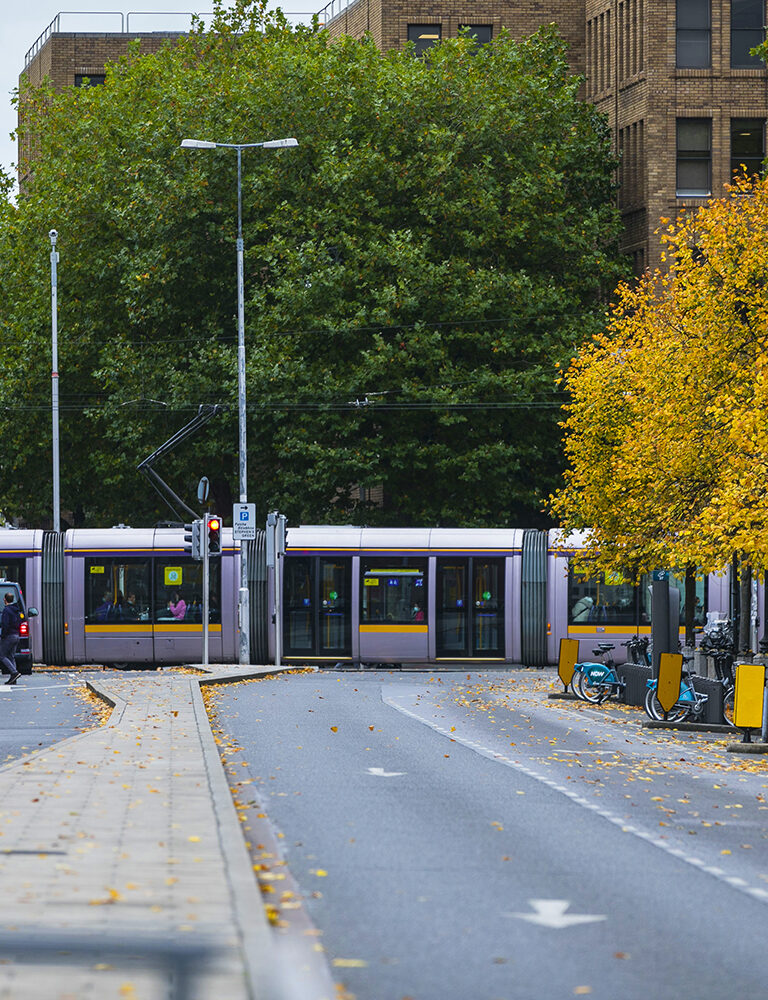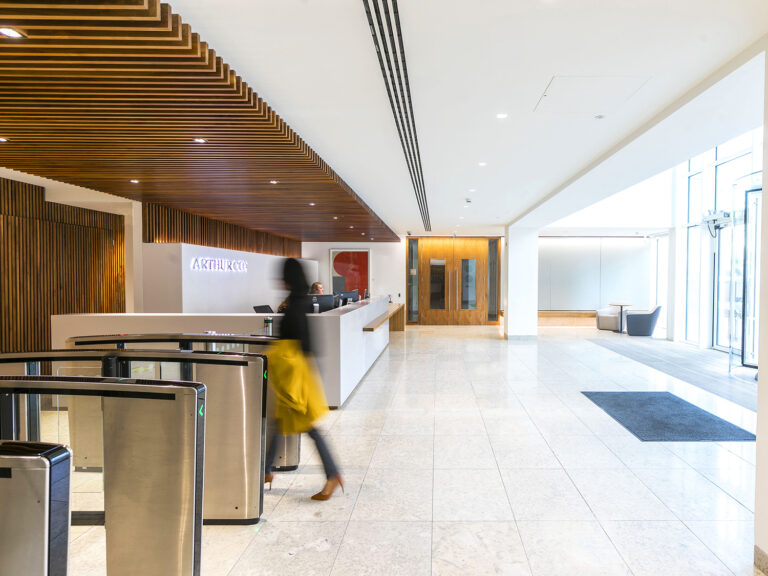
Ireland’s Climate Action Plan 2021
The Government has published the much anticipated Climate Action Plan 2021 (“CAP21”), a sectoral roadmap for meeting Ireland’s 2050 national climate objective, required to be prepared under the Climate Action and Low Carbon Development Acts 2015 to 2021. Against the backdrop of COP26, the EU’s Fit for 55 package, and Ireland’s €165 billion National Development Plan, CAP21 has focused the public discourse on coming to terms with the scale of investment needed to transition to net zero and avoid harmful climate change. In this briefing we look at some of the key details of CAP21.
View this briefing in PDF format here.
Investment
The Government estimates that delivery of CAP21 will mean mobilisation of €125 billion of capital investment (additional and reallocated) in low-carbon technologies and infrastructure up to 2030.
This includes investment of €51 billion in transport and €35 billion in buildings. The largest incremental increases are foreseen in buildings (75%), energy (50%) and agriculture (50%).
Many of the actions in CAP21 are referenced in budget allocations in Ireland’s €165 billion National Development Plan
Emissions Reduction Targets
Ireland’s 2030 target is to reduce emissions by 51% as against 2018. The 2050 target is to reach net zero.
Sector specific reductions to be achieved are shown as follows:

CAP21 identifies 475 actions. (CAP19 also had an Annex of Actions with timelines and lead & other stakeholders identified). Legislation requires annual updates to CAP21 which must be consistent with the carbon budget programme and which must set out actions for meeting sectoral emissions ceilings.
Electricity
Renewables Target: It is now intended to meet up to 80% of electricity demand from renewable power by 2030, entailing investment of tens of billions of euro. This would represent around a doubling of current levels.
Renewables Capacity: In terms of installed renewable capacity, CAP21 commits to 15GW of new renewable capacity. This would represent more than a quadrupling of current renewable capacity. (Installed wind energy capacity was 4.3GW at the end of 2020 according to the EirGrid Generation Capacity Statement). Accommodating this volume of renewable capacity on a small island system will require an unprecedented level of investment in transmission infrastructure and, to avoid unacceptable levels of curtailment, significant investment in interconnection and storage. The forthcoming decision of the Commission for Regulation of Utilities on implementing Article 13 of Regulation (EU) 2019/943 will also be critical to determining whether this objective can be achieved.
The Target Fuel Mix (subject to the outcome of technologically neutral RESS auctions) is as follows:
Offshore wind: 5 GW, up from 3.5 GW in CAP19. A new Offshore Renewable Energy Development Plan is to be completed to assist in assessment of areas suitable for generation in the context of transition to a plan-led regulatory regime, as outlined in the Government’s May 2021 Policy Statement. A new consenting process is also being rolled out.
- Onshore Wind: 8 GW, around the same as CAP19.
- Solar PV: 1.5-2.5 GW, up from 0.4 GW in CAP19.
- New Gas-Fired Power for flexible support of renewables: 2GW.
- Zero Emissions Gas: The Government is to identify a path to deliver 1-3 TWh of zero emissions gas, including green hydrogen.
- Small Generation: The Microgeneration Support Scheme is to deliver 260 MW of <50kW generation, and a Small-scale Generation Scheme will support >50kW solar.
- Coal and Peat: phase out to be completed.
- At least 500 MW of new renewable power is to be delivered through community-based projects.
Target Infrastructure: The construction of three interconnectors is to be finalised. | Further interconnection is to be explored, including hybrid interconnectors (cross-border transmission with offshore generation). | The grid is to be expanded / reinforced (lines, substations, new technologies). | The regulatory treatment of storage, including market incentives, is to be reviewed. | EirGrid is to develop a Control Centre of the Future Roadmap and a Power System Operational Policy Change Roadmap to chart the way the system will adapt for the new fuel mix. | Grid connection and market arrangements are to be reviewed to facilitate more hybrid generating plants. | The policy on private networks / direct lines is to be reviewed (a current potential impediment to growth of the physical CPPA sector).
All-Island Electricity Demand is forecast to grow over 2021-2030 between 18% (low demand scenario) to 43% (high demand scenario), as indicated in the EirGrid Generation Capacity Statement. (The all-island Transmission Peak in 2020 was just over 7GW – just over 5GW excluding Northern Ireland). CAP21 aims to ensure 20-30% of system demand is flexible by 2030.
Large Energy Users: Ireland’s goal of installing in excess of 20GW capacity by 2030 should be very welcome news for those wishing to encourage inward investment from manufacturing, industry, pharmaceuticals and digital infrastructure. CAP21 says that policy and regulatory measures for large energy users is to be considered and LEUs will be expected to operate within sectoral emissions ceilings. A ‘strategic enabler’ identified in EirGrid’s Shaping our Electricity Future Roadmap is to incentivise optimal location of new demand and generation, which is said to mean locating demand close to renewable generation or locating new generation close to higher grid capacity. CAP21 indicates the intent “to locate demand where existing or future electricity grid is available and close to renewable energy generation”.
Demand Management: The Commission for Regulation of Utilities is to deliver a Demand Side Strategy with the aim of increasing demand side support from all sectors and active participation by consumers in energy markets. | ESB Networks will continue the roll out of the National Smart Metering Programme.
Transport
Target: By 2030 there should be an additional 500,000 daily public transport and active travel journeys, a 14% increase on current levels.
Public Transport: BusConnects corridor work is to begin in several cities. | The Connecting Ireland Rural Mobility Plan is to deliver an enhanced rural transport system. | The length of electrified rail is to increase from 50 to 150km including through DART+ and MetroLink.
Active Travel: A central theme is encouraging a modal shift to Active Travel, with several actions focusing on expanding cycling and walking infrastructure and enabling e-scooters and e-bikes.
Vehicles: There is a target of increasing the fleet of EVs and low emitting vehicles (LEVs) to 945,000 by 2030 (to include cars, vans, trucks, buses, and an expanded electrified rail network). Government wishes to reduce Internal Combustion Engine kilometres by circa 10% compared to present day levels. | It is intended to raise the blend proportion of biofuels to B20 in diesel and E10 in petrol. | Also foreseen is eventual inclusion of green hydrogen in the Biofuels Obligation Scheme.
Emphasis on policy supports, investment, infrastructure & information: CAP21 is intended to support the goals of Project Ireland 2040, the National Planning Framework, the National Remote Work Strategy, the National Adaptation Framework, Our Rural Future – Rural Development Policy 2021-2025, and the forthcoming Sustainable Mobility Policy, Road Haulage Sector Strategy, and Strategic Rail Review.
Demand Management: a Five Cities Demand Management Study is to be developed to identify ways to reduce transport demand in urban centres including through low emission zones and parking pricing policy. | Planning and regulatory policy should increase travel choices and reduce car dependency.
Further identification of measures: Progress is to be reviewed and further measures identified to deliver the full 2030 emissions reduction target (because a further reduction of circa 0.9 MtCO2 needs to be identified to meet the reductions target in transport).
Built Environment
Considerable Room for Improvement: Irish emissions reduction in this sector is below European averages. 2018 statistics indicate that Irish homes emit 60% more CO2 than the average EU home and only 10% of Irish residential stock is BER B2 or better.
Fossil Fuel Phase Out: It is intended to phase out the use of fossil fuels for space and water heating in all new buildings by 2030 and plan for the phase out of fossil fuels in existing buildings by 2050 based on a National Heat Study. | A revised Energy Efficiency Obligation Scheme is to be implemented.
Residential Buildings: 2030 targets include completing 500,000 residential retrofits to achieve a B2 BER / cost optimal equivalent or carbon equivalent, and to install 600,000 heat pumps in residential buildings (including 400,000 in existing buildings). | Measures are to be designed to incentivise retrofit of rental properties. | Actions for the rollout of the National Retrofit Plan are categorised under four pillars: Driving Demand & Activity; Financing & Funding Models; Supply Chain, Skills & Standards; and Structures and Governance.
Commercial Buildings: It is intended to deploy zero-carbon heating to meet the needs of 50,000 typical commercial buildings.
District Heating: It is intended to deliver up to 2.7 TWh of district heating. | Actions include developing a regulatory framework for district heating, identifying appropriate financing mechanisms, and allocating support to projects from the Climate Action Fund.
Geothermal Heating: a policy and regulatory framework is to be developed following on from the 2020 Geothermal Energy in Ireland Roadmap.
Standards and Low Carbon Construction: A review of Conservation of Fuel and Energy provisions in the Building Regulations is to be undertaken. It is also intended to develop a framework for measuring and limiting embodied carbon emissions of building projects and construction products, and to develop a carbon Building Rating Calculation Methodology.
Other Key Areas
Agriculture: A main target is to collaborate with the waste sector to contribute to production by 2030 of 1.6 TWh/annum of sustainably produced biomethane for injection to the grid. Emissions are to be reduced through various aspects of management of land (such as changed use of fertiliser) and animals. It is intended to explore further pathways to emissions reduction (through, for example, diversification of land use, use of methane reducing feed additives, and farm carbon trading).
Carbon Pricing: The successive increases in domestic carbon tax (to reach €100/tonne by 2030) are forecast to raise €9.5 billion for retrofits (€5 billion); just transition (€3 billion); and promotion of sustainable agriculture practices (€1.5 billion).
Circular Economy: It is anticipated that a Circular Economy Strategy will be published by the end of 2021 and enshrined in law. A Bioeconomy Action Plan is anticipated by 2022. In the waste sector, several targets are outlined in the areas of landfill, recycling, food waste and plastic single use items.
Enterprise: There is a key target of reducing Ireland’s enterprise emissions by approximately 40% by 2030 as against 2018 levels through use of the EU ETS, carbon pricing in domestic budgets, Government support schemes, decarbonising heat and building materials, reducing f-gas emissions by 80% by 2030 as against 2014 levels, and carbon capture and storage.
Land Use, Land Use Change & Forestry: To meet emissions reduction targets it is intended to increase afforestation, reduce management intensity of grasslands on drained organic soils, increase efficient management of grasslands to improve sequestration, rehabilitate peatlands, and designate 30% of Ireland’s marine area as a Marine Protected Area.
Public Sector: The public sector is to reduce its emissions by 51% and improve energy efficiency by 50% by 2030 as against 2016-2018 levels. Green criteria should be included in all procurements using public funds, with requirements introduced on a phased basis and support provided to procurers.
Just Transition & Citizen Engagement
A Just Transition Commission is to be established. Just Transition is based on: (1) an integrated, structured, evidence-based approach; (2) upskilling; (3) sharing of costs for equitable impact; and (4) social dialogue. As indicated above, carbon tax receipts will contribute to Just Transition.
A Just Transition Implementation Plan for the Midlands Region will support transition from peat extraction for power generation, with an action being to develop potential for renewable energy hubs.
A National Dialogue on Climate Action will be established. There will be annual consultation on the CAP, engagement through education and training, delivery of projects through the Climate Action Fund, and establishment of a Citizens’ Assembly on Biodiversity.
It will get more challenging
CAP 21 describes core measures as covering the established fundamentals of decarbonisation and building on existing CAP19 actions. They are necessary but not sufficient to achieve the CAP21 targets. Examples are renewable power, electrification across demand sectors, and electricity demand management.
CAP 21 indicates that further measures that do not yet exist in Ireland at scale will be technically more challenging. Examples are the deployment of green hydrogen & biogas / biomethane, carbon capture & storage in industry, and acceleration of transition in agriculture.
The challenge in meeting the Government’s laudable targets will lie in the detail of delivering the largescale infrastructure and systems’ changes that are required. In addition to understanding the policy and regulatory pathway for project delivery, enterprises and investors will also be keen for assurance that domestic and EU emissions reduction mechanisms will dovetail and that access to in-demand infrastructure and resources will be managed fairly across various sectors of the economy.
Ireland’s Climate Action Plans are required to be updated annually and CAP21 will need to be revised as the EU’s Fit for 55 package progresses through the legislative process. The EU Climate Law already enshrines the EU target of reducing emissions by at least 55% by 2030 as compared to 1990 levels, and it binds Member States, when implementing the target, to prioritise swift and predictable emissions reduction and to enhance removals by natural sinks.



